Background
Iversen was born on October 31, 1937 in Exeter, Devon, United Kingdom; the son of Svend and Anna Caia Iversen.

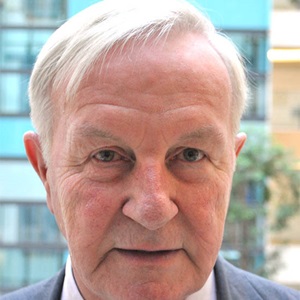


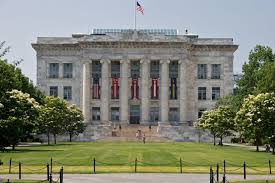

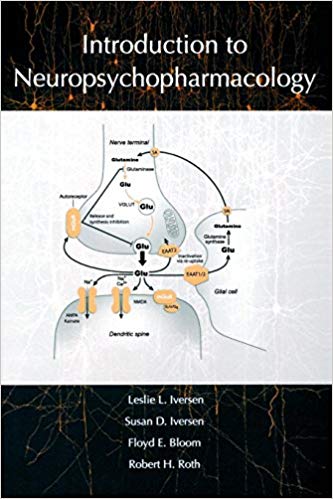
(Introduction to Neuropsychopharmacology expands on the mo...)
Introduction to Neuropsychopharmacology expands on the molecular and cellular foundations of the classic Biochemical Basis of Neuropharmacology, Eighth Edition (Cooper, Bloom, and Roth) by now including the behavioral methods used to study psychoactive drugs in experimental animals and in humans. Authored by four founders of modern neuroscience, this concise and comprehensive text covers the current series of medications used to treat diseases of the brain and nervous system--both psychiatric and neurologic--as well as legal and illegal recreational drugs and the neuroscientific information that explains how these medications act on the brain from the molecular to the clinical level. The text ranges from drugs that affect the mood and behavior to hypnotics, narcotics, anticonvulsants, and analgesics.
http://www.amazon.com/gp/product/0195380533/?tag=2022091-20
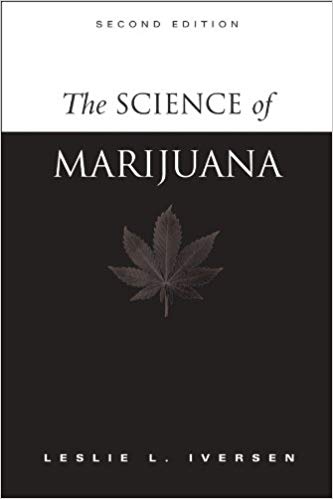
(In The Science of Marijuana Leslie Iversen explains the r...)
In The Science of Marijuana Leslie Iversen explains the remarkable advances that have been made in scientific research on cannabis with the discovery of specific receptors and the existence of naturally occurring cannabis-like substances in the brain. Dr. Iversen provides an objective and up-to-date assessment of the scientific basis for the medical use of cannabis and what risks this may entail. The recreational use of the drug and how it affects users is described along with some predictions about how attitudes to cannabis may change in the future.
http://www.amazon.com/gp/product/B00A8SS4M0/?tag=2022091-20
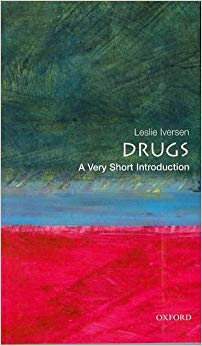
(The twentieth century saw a remarkable upsurge of researc...)
The twentieth century saw a remarkable upsurge of research on drugs, with major advances in the treatment of bacterial and viral infections, heart disease, stomach ulcers, cancer, and mental illnesses. These, along with the introduction of the oral contraceptive, have altered all of our lives. There has also been an increase in the recreational use and abuse of drugs in the Western world. This Very Short Introduction gives a non-technical account of how drugs act on the body and how therapeutic drugs are developed and tested, then goes on to review both legal (prescription, alcohol, nicotine, and caffeine) and illegal drugs, and discuss current ideas about why some drugs are addictive, and whether drug laws need reform.
http://www.amazon.com/gp/product/0192854313/?tag=2022091-20
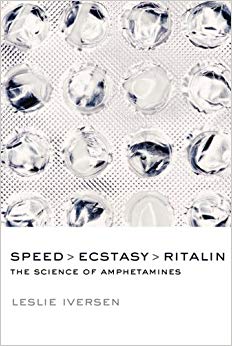
(Amphetamines have had a relatively short, though chequere...)
Amphetamines have had a relatively short, though chequered history. From their use in wartime, their abuse by the beat generation, up to the popularity of Ecstasy in the late 20th century, many have found amphetamines an enjoyable, though unpredictable, stimulant. More than that though, amphetamine-based treatments have been found to have beneficial effects for those suffering from attention deficit disorders, and are now widely prescribed in the US and elsewhere as a treatment for children and adults. What is the truth behind these medical claims? What are the real effects of stimulants like Ecstasy? Just how harmful are amphetamines? In this book, a leading authority on psychoactive drugs explores the uses and abuses of amphetamines. Starting with a look at the origins of amphetamines, their use in wartime, their use by poets, musicians - even a President of the US, it presents a fascinating and accessible account of amphetamine use. It examines the evidence for the claims that drugs like Ecstasy kill, and considers the widespread use of amphetamines for ADHD, presenting a thorough account based on science and fact, rather than dogma.
http://www.amazon.com/gp/product/0198530900/?tag=2022091-20
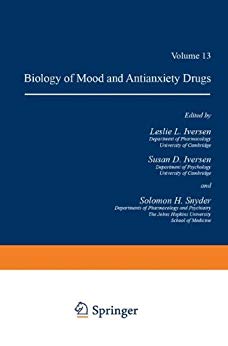
(Underlying the design of the Handbook of Psychopharmacolo...)
Underlying the design of the Handbook of Psychopharmacology is a prejudice that the study of drug influences on the mind has advanced to a stage where basic research and clinical application truly mesh. These later volumes of the Handbook are structured according to this conception. In certain volumes, groups of drugs are treated as classes with chapters ranging from basic chemistry to clinical application. Other volumes are assembled around topic areas such as anxiety or affective disorders. Thus, besides chapters on individual drug classes, we have included essays addressing broad areas such as "The Limbic-Hypothalamic-Pituitary-Adrenal System and Human Be havior" and "Peptides and the Central Nervous System. "Surveying these diverse contributions, one comes away with a sentiment that, far from being an "applied" science borrowing from fundamental brain chemistry and physiology, psychopharmacology has instead provided basic researchers with the tools and conceptual approaches which now are advancing neurobiology to a central role in modern biology. Especially gratifying is the sense that, while contributing to an understanding of how the brain functions, psychopharmacology is a discipline whose fruits offer genuine help to the mentally ill with promises of escalating benefits in the future.
http://www.amazon.com/gp/product/B00FAXEWF6/?tag=2022091-20
Iversen was born on October 31, 1937 in Exeter, Devon, United Kingdom; the son of Svend and Anna Caia Iversen.
Iversen received a Bachelor of Arts in Biochemistry in 1961 and a Doctor of Philosophy in Pharmacology in 1964 from the University of Cambridge.
Iversen began his career as a researcher in Julie Axelrod’s laboratory at the National Institutes of Health in 1964. There he worked on the project, which was based on the idea that one could study catecholamine metabolism and drug effects on the brain by labeling the catecholamine-containing neurons with radioactive amines. Then in 1965, Iversen went to the Department of Neurobiology at Harvard Medical School. He joined the “GABA project” which had already been under way for some years by a team that included Steve Kuffler, David Potter and Ed Kravitz. Leslie and that team worked on the inhibitory motor nerves of the lobster. In his work on GABA he participated in the first demonstration of the release of GABA on activation of an inhibitory synapse and was the first describe GABA uptake into inhibitory nerve endings in mammalian brain.
In 1967, Leslie joined the Department of Pharmacology as a researcher at the University of Cambridge. During his four years he developed his own research group. Leslie was also able to maintain an interest in GABA by collaborating with another faculty member, Mike Neal. They were the first to show the presence of a high affinity saturable uptake of GABA by rat brain slice preparations in vitro.
Leslie and scientist Floyd Bloom, with the electron microscope method, were able to study in detail the cellular location of H3-GABA that had been accumulated by slices of rat cerebral cortex. Also he worked in collaboration with Ira Black and Ian Hendry and a graduate student Angus Mackay on the role of nerve growth factor, and the way in which nerve activity affected the expression of key enzymes in adrenergic neurons. They found that the level of the biosynthetic enzyme tyrosine hydroxylase in sympathetic ganglion cells or in the adrenal medulla was elevated by sustained increases in the activity of presynaptic fibers, and decreased if these fibers were lesioned.
Then he continued his research career as a director of MRC Neurochemical Pharmacology Unit at the University of Cambridge from 1970 to 1983. In addition, in 1982, Iversen was accepted a director of the Neuroscience Research Centre and joined the company in temporary lab facilities at their commercial headquarters in Hoddesdon, Herts. One of his major research projects was aimed to discover a muscarinic agonist drug to treat the cholinergic deficiency in Alzheimer’s disease. His group analyzed the subunit composition of the NMDA receptor in different CNS regions, in the hope that subtype-selective drugs might in future offer more selective pharmaceutical weapons. Another of the projects initiated at the Neuroscience Research Centre was one related to the inhibitory amino acid GABA.
He worked as a director at Merck Research Laboratories from 1983 to 1995. In the field of neuropeptide research his efforts were eventually rewarded whilst working at Merck Research Laboratories by the development of the substance Preceptor antagonist aprepitant as a novel treatment for nausea and vomiting associated with cancer chemotherapy. He has been keen to explain the complex scientific issues associated with the use of psychoactive drugs to a general audience, and has written books about marijuana and amphetamines.
He obtained a license from Merck for all of the CCK antagonist compounds that he had worked on and developed a start-up company, Leslie L. Iversen Panos Therapeutics Ltd., to continue the development of some of these drugs. He became a visiting professor in the Department of Pharmacology at the University of Cambridge in 1995. From 1996 to 1999 Iversen acted as a part-time consultant to the MRC Cyclotron Unit at the Hammersmith Hospital campus in west London. He held the position of a part-time professor at King’s College, London, where he worked between 1999–2004, helping to develop a new research laboratory, The Wolfson Centre for Age Related Diseases. Also Leslie developed an interest in the pharmacology of cannabis and other illicit psychoactive drugs. In 1998, he was coopted by the UK House of Lords Science and Technology Committee to act as their scientific advisor for their inquiry into cannabis.
Since 2010 Iversen has been a chair of the Advisory Council on the Misuse of Drugs.
Leslie was the first to demonstrate that GABA was released from inhibitory nerve terminals. He has demonstrated trans-synaptic regulation of enzymes concerned with transmitter biosynthesis and has carried out extensive studies of the effect of nerve growth factor on the biochemistry of sympathetic neurons.
Also Iversen has placed the study of uptake processes for noradrenaline on a quantitative basis and has discovered a second non-neuronal uptake which leads to a rapid metabolic degradation of the accumulated amines. He has exploited uptake processes in the study of the turnover of catecholamines and other synaptic transmitters and as a basis of an electron microscopic radioautographic method for delineating the transmitter specificity of terminal boutons.
(Introduction to Neuropsychopharmacology expands on the mo...)
(In The Science of Marijuana Leslie Iversen explains the r...)
(Underlying the design of the Handbook of Psychopharmacolo...)
(The twentieth century saw a remarkable upsurge of researc...)
(Amphetamines have had a relatively short, though chequere...)
Iversen was a member of the Scientific Advisory Board for a Danish venture capital fund. He is a member of the Royal Society of London and the American Academy of Arts and Sciences.
Leslie Iversen married Susan Diana (nee Kibble) Iversen in 1961.They have a son and a daughter.
